In the current times, collecting and analyzing data is a game changer for any business. Insights derived from data surveys hold the key to deciphering customer sentiments, guiding critical decisions, and propelling company growth. The advent of online survey tools has magnified its significance, becoming instrumental across diverse sectors—from market research to HR evaluations, customer experience, and beyond.
In this article, we will delve into the depths of survey data collection, exploring its significance, types, examples, and various methodologies. Join us as we unravel how survey data helps in smart decision-making and improving relationships with stakeholders and customers. Let's get started!
TL;DR
-
Survey data collection is the process of collecting data or responses from a targeted group of individuals, often through structured questionnaires or surveys.
-
The process involves designing surveys, selecting appropriate methodologies (online, in-person, phone, etc.), distributing them, collecting survey responses, and analyzing the gathered data to derive meaningful insights.
-
Primary data collection uses surveys or interviews, while secondary methods involve existing data sources. Quantitative gathers numerical data for analysis, qualitative provides descriptive insights, and longitudinal tracks changes over time.
-
Net promoter score, customer satisfaction, customer effort score, market research surveys, product feedback surveys are some of the best examples surveys for data collection.
-
Various data collection methods include online surveys, face-to-face surveys, telephone interviews, paper surveys, and specialized surveys among others.
-
You can use Zonka Feedback to create and customize your data collection forms and share them with your target audience to analyze results and take action to close feedback loop. You can schedule a demo to know more about the product.
Collect & Measure Customer Feedback
With Data Collection Surveys, understand what users need and learn ways to delight your customers.

What is Survey Data?
Survey data collection refers to the systematic process of gathering information or responses from a selected sample of individuals or groups using structured methodologies such as online surveys, questionnaires, interviews, or observations. This process aims to collect valuable insights, opinions, or factual data to address specific survey research objectives, inform decision-making, or understand the perspectives of a target audience.
Survey data presents itself in various formats like texts, videos, images, documents, and audio recordings, among others. The kind of data acquired through an online survey depends on the chosen method of data collection, the specificity of the questions asked, and the participant's willingness to engage openly and honestly in the survey process.
Importance of Survey for Data Collection
Driving business growth demands prioritizing survey-based data collection, given that 80% of successful companies attribute revenue increases to customer experience surveys. This underscores the importance of survey data collection.
Let us look at the reasons why data collection through surveys is important in the current times:
-
Holistic Insights: Survey data collection, when designed meticulously, can gather a broad range of insights from diverse demographics or segments. By using a well-structured questionnaire or survey, it becomes possible to cover various aspects of a topic or gather comprehensive feedback on products, services, or experiences.
-
Flexibility in Sharing Surveys: Digital data collection tools offer flexibility in disseminating online survey across different channels and platforms. This versatility enables researchers to share surveys via email, social media, websites, or mobile apps, reaching a wider audience and increasing response rates.
-
Informed Decision-Making: Survey data empowers decision-makers by providing actionable insights derived directly from the target audience or stakeholders. The data collected informs strategies, policies, or initiatives, ensuring they align more closely with the needs, preferences, or opinions of the surveyed group.
-
Cost-Efficiency: Survey data collection is often cost-efficient compared to other forms of research methods or data-gathering methods. Online survey tools and digital surveys significantly reduce expenses associated with printing, distribution, and manpower. It allows for reaching a larger audience without incurring substantial financial burdens.
-
Customer & Stakeholder Engagement: Engaging customers or stakeholders through surveys fosters a sense of involvement and demonstrates a commitment to their opinions. When you use a data collection app to collect feedback actively and act upon it, you build stronger relationships, enhance satisfaction, and demonstrate responsiveness to concerns or suggestions.
Data Collection Types for Surveys
Let us look at the different types of data collection that can help you gather accurate information and take the required actions.
Primary Data Collection
Primary data collection involves directly gathering information for a specific survey research study or project. This method often employs surveys, interviews, experiments, or observations to obtain fresh and tailored data aligned with the research objectives. It allows researchers to control the data collection process and engage directly with respondents, ensuring the information collected meets the study's unique requirements.
Secondary Data Collection
Secondary data comprises existing information collected by others for their own purposes but can be repurposed by researchers. It includes sources like published research papers, government statistics, or historical records. This pre-existing data, while not collected directly for the current study, offers insights and reference material, saving time and resources in certain research works.
Quantitative Data Collection
Quantitative data collection involves gathering numerical information that can be statistically analyzed. Surveys with closed-ended questions, numerical ratings, or measurements are common methods. This type of data focuses on objective measurements, enabling statistical analysis and numerical representation, facilitating clearer patterns or trends.
Qualitative Data Collection
Qualitative data collection involves obtaining non-numerical data that provides depth and context to survey findings. It includes methods such as interviews, open-ended survey questions, or focus groups. This form of data collection emphasizes understanding behaviors, motivations, or perceptions, offering rich descriptive insights and nuanced understanding beyond numerical data analysis.
Longitudinal Data Collection
Longitudinal data collection entails gathering information from the same subjects not at a certain point in time but over an extended period. It allows researchers to track changes, developments, or trends within a specific population over time. This method provides insights into patterns of change, continuity, or progression within a study group, offering valuable insights into temporal aspects of research.
Data Collection Survey Examples
Collecting survey data includes leveraging different types of surveys to gather data tailored to specific survey research needs or objectives. Let us look at some data collection survey examples that you can utilize to gather insights based on your business objectives.
1. Net Promoter Score Survey
The Net Promoter Score or NPS survey aims to gauge customer loyalty by asking survey respondents how likely they are to recommend a product or service to others. Customers' responses help categorize them into Promoters (loyal and enthusiastic), Passives (satisfied but not enthusiastic), and Detractors (unhappy customers).
This data collection survey method provides a clear indication of customer satisfaction and loyalty, allowing you to identify areas for improvement and foster a loyal customer base.
2. Customer Satisfaction Survey
Customer Satisfaction Surveys or CSAT surveys are designed to assess customers' overall satisfaction with products, services, or experiences provided by a company. These survey questionnaires collect survey data as feedback on various aspects, such as product quality, service responsiveness, or after-sales support.
Analyzing the responses from this data collection survey allows you to pinpoint areas needing improvement, enhance customer retention strategies, and maintain high levels of customer satisfaction.
3. Customer Effort Score Survey
The Customer Effort Score or CES survey focuses on measuring the ease or difficulty customers encounter while interacting with a product or service. It assesses how effortless or burdensome customers find resolving issues or completing tasks.
This data collection survey example helps in identifying pain points in the customer journey, guiding efforts to streamline processes and reduce customer effort, ultimately fostering better customer experiences.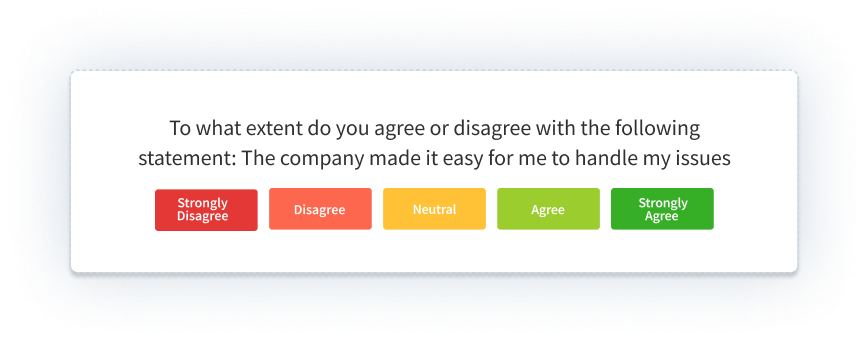
4. Market Research Survey
Market research surveys delve into understanding market dynamics, consumer behavior, preferences, and competitive landscapes. Through market research tools, you can collect data on market trends, consumer sentiments, buying patterns, and competitor analysis.
These data collection surveys equip your businesses with valuable insights to refine marketing strategies, launch new products, identify market opportunities, and stay ahead in a competitive landscape.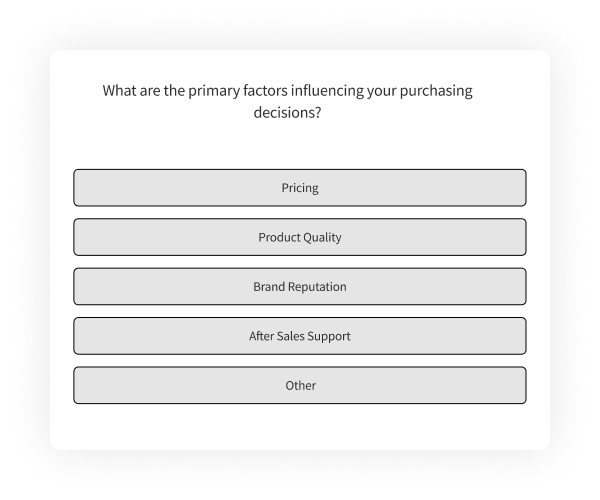
5. Product Feedback Survey
Product feedback surveys gather user opinions, experiences, and suggestions regarding specific products or features. These surveys aim to collect detailed feedback on product usability, functionality, satisfaction levels, and areas for improvement.
The insights obtained through this data collection survey help in refining existing products, developing new features, and aligning product offerings with customer preferences and needs.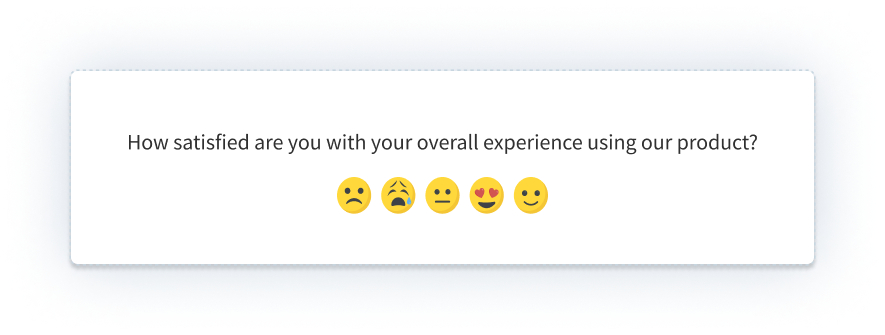
6. Healthcare Assessment Survey
Healthcare assessment surveys evaluate patient satisfaction, access to healthcare services, or specific health concerns within a community or healthcare facility. These surveys provide critical insights into patient experiences, healthcare service quality, and the effectiveness of healthcare initiatives.
The collected data assists healthcare providers, policymakers, and other stakeholders from organizations in improving healthcare services, addressing community health needs, and enhancing overall patient experiences.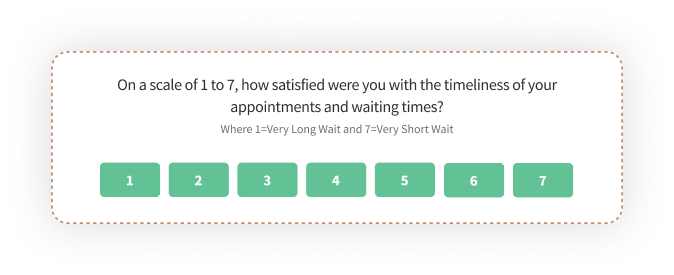
Survey Data Collection Methods
Let us look at the different types of survey data collection methods that can help you collect honest feedback and assist in drawing conclusions to better understand your audience or research topic.
Online Surveys
Online surveys are a data collection method that involves using digital platforms or websites to create and distribute surveys. Respondents may complete these surveys in the form of website surveys or social media platforms. They offer convenience, allowing potential respondents to participate at their preferred time, and offer high data quality and quick data collection and analysis due to automated survey platform tools.
Online survey tools can be used to create online questionnaires that can be either long surveys that are useful in research fields like academia and healthcare analysis or microsurveys that can be useful in measuring customer satisfaction with products or services.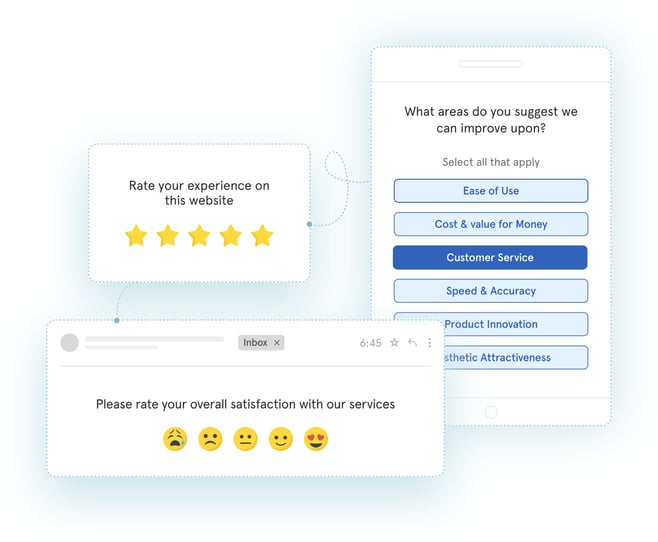
Face-to-face Surveys or In-person Interviews
Face-to-face or in-person interviews are a type of survey data collection method that involves direct interaction between the interviewer and the respondent. They allow for deeper exploration of responses, clarification of queries, and non-verbal cues than other data collection methods. Ideal for complex or sensitive topics, they provide a personal touch and foster rapport, but they can be time-consuming and resource-intensive.
Telephone Surveys
Telephone surveys or interviews involve contacting respondents over the phone to conduct surveys. They are efficient in reaching a geographically dispersed audience and enable immediate clarification of questions. However, they may face limitations than other methods in gathering detailed responses and have lower response rates due to potential inconvenience to participants.
Paper Surveys
Paper surveys are physical questionnaires distributed via mail, in-person, or through physical drop-off points. They cater to survey participants who prefer traditional methods and allow for offline participation.
While paper questionnaires, including mail surveys, provide accessibility for those without digital access, they necessitate manual data entry and analysis, potentially extending processing times and yielding lower response rates compared to digital survey methods.
Email Surveys
Email surveys involve sending survey questionnaires to respondents via email. They provide a versatile platform for longer, more detailed surveys with various question types (multiple-choice, open-ended, etc.). However, their success often depends on factors like the quality of the email list, the relevance of the survey, and respondents' willingness to engage with email-based surveys.
Email surveys can be cost-effective and enable follow up or reminders with non-responders to improve response rates.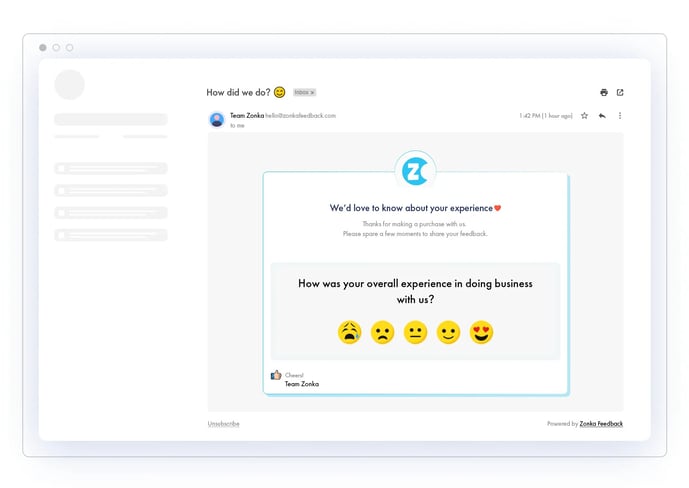
Mobile Surveys
Mobile surveys are designed to be completed on mobile devices such as smart phone or tablets. These surveys often use responsive design techniques to ensure compatibility and ease of use on smaller screens. They capitalize on the widespread use of mobile devices, allowing respondents to participate from anywhere, anytime, leading to increased engagement and higher response rates.
SMS Surveys
SMS surveys involve sending survey questions to participants via text messages through SMS survey tools. They are concise and typically consist of short, straightforward questions due to character limitations in text messages. This method leverages the popularity of text messaging and is effective for quick feedback or simple inquiries, but it may lack space for more elaborate responses that can be handled by using feature-rich SMS survey software. 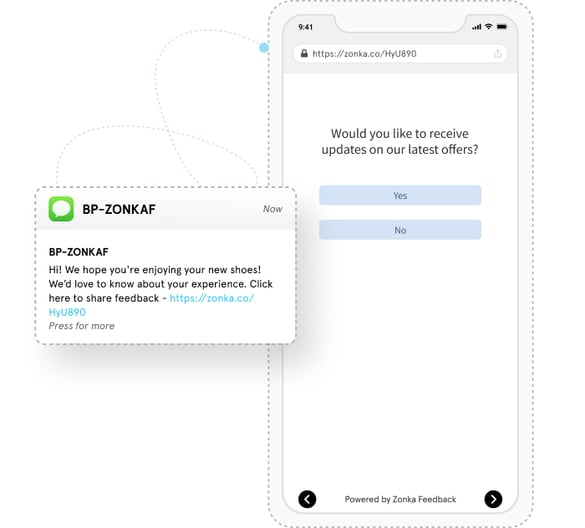
Specialized Surveys
Specialized surveys are tailored to specific purposes, such as gathering customer feedback, conducting research for products, or assessing employee satisfaction. They are designed with specific objectives in mind and use questions that align with the intended insights, allowing for targeted and actionable data collection.
Here are some examples of specialized surveys:
-
Exit Intent Survey: Implemented when visitors are about to leave a website or app, aiming to understand reasons for exit, user experience issues, or unmet needs before departure.
-
Lead Generation Survey: Through event lead capture questions, you can qualify and capture information from potential leads, gathering data on preferences, needs, or demographics to tailor follow-up communication.
-
Mental Health Surveys: Designed to assess mental health concerns, well-being, stress levels, or specific mental health conditions, aiding in identifying issues and providing support.
-
Employee Satisfaction Surveys: Conducted to gauge employees' sentiments about their workplace, job satisfaction, company culture, and areas needing improvement within the organization.
-
Churn Surveys: Employed when customers discontinue using a service or product, aiming to identify reasons for churn, dissatisfaction, or areas needing improvement to reduce customer attrition.
How to Create & Collect Survey Data with Zonka Feedback?
Crafting a data collection survey using Zonka Feedback is extremely simple and requires following just a few steps. Whether the purpose of your survey data is to gauge customer sentiment, get insights on product usability, or employee satisfaction, Zonka Feedback accommodates all these use cases and more.
Let's delve into the step-by-step process of achieving this.
Step 1: Log in to your Zonka Feedback Account
Register and log in to your Zonka Feedback account and click on the 'Add Survey' option.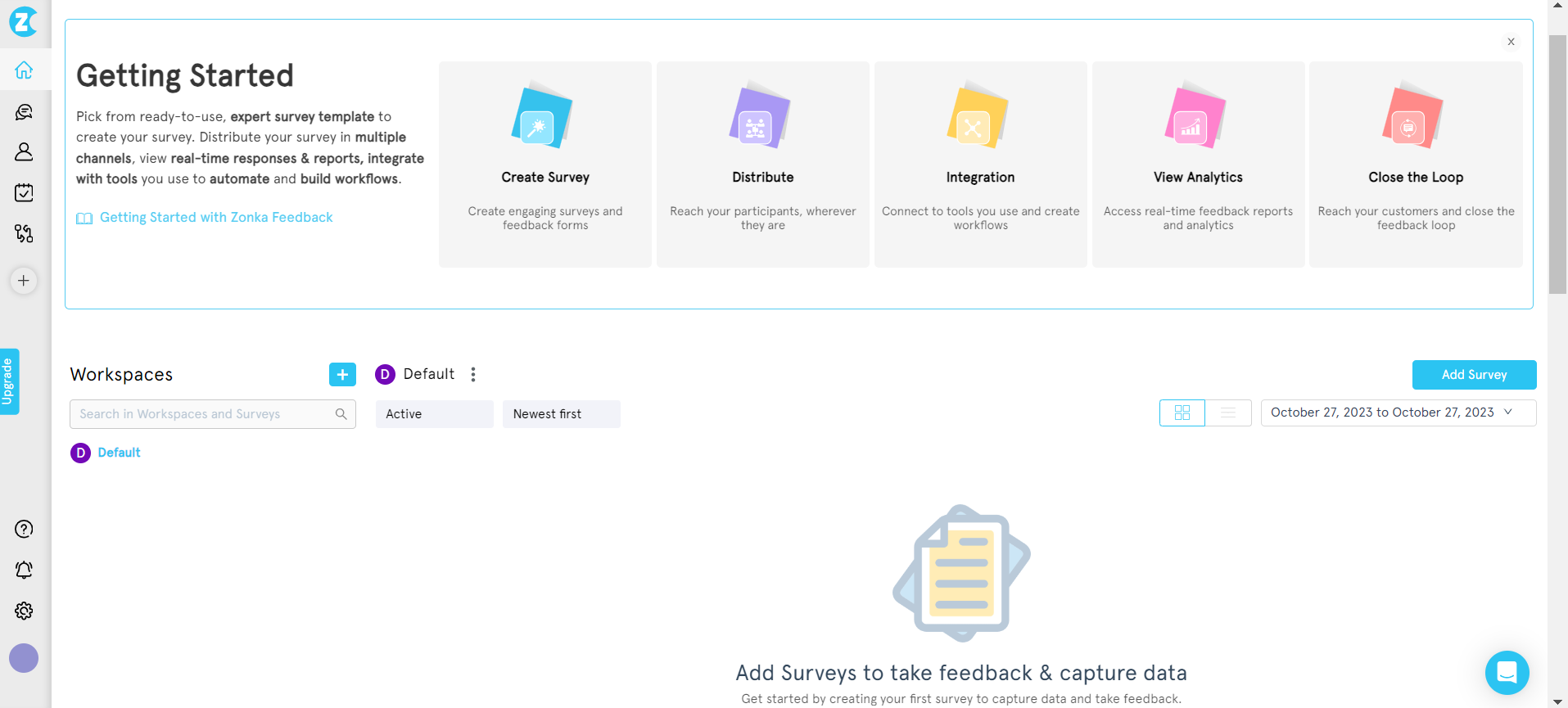
Step 2: Select the Survey Template
Select the template of your choice from the option provided or if you want to create your own survey, select 'Start from Scratch'.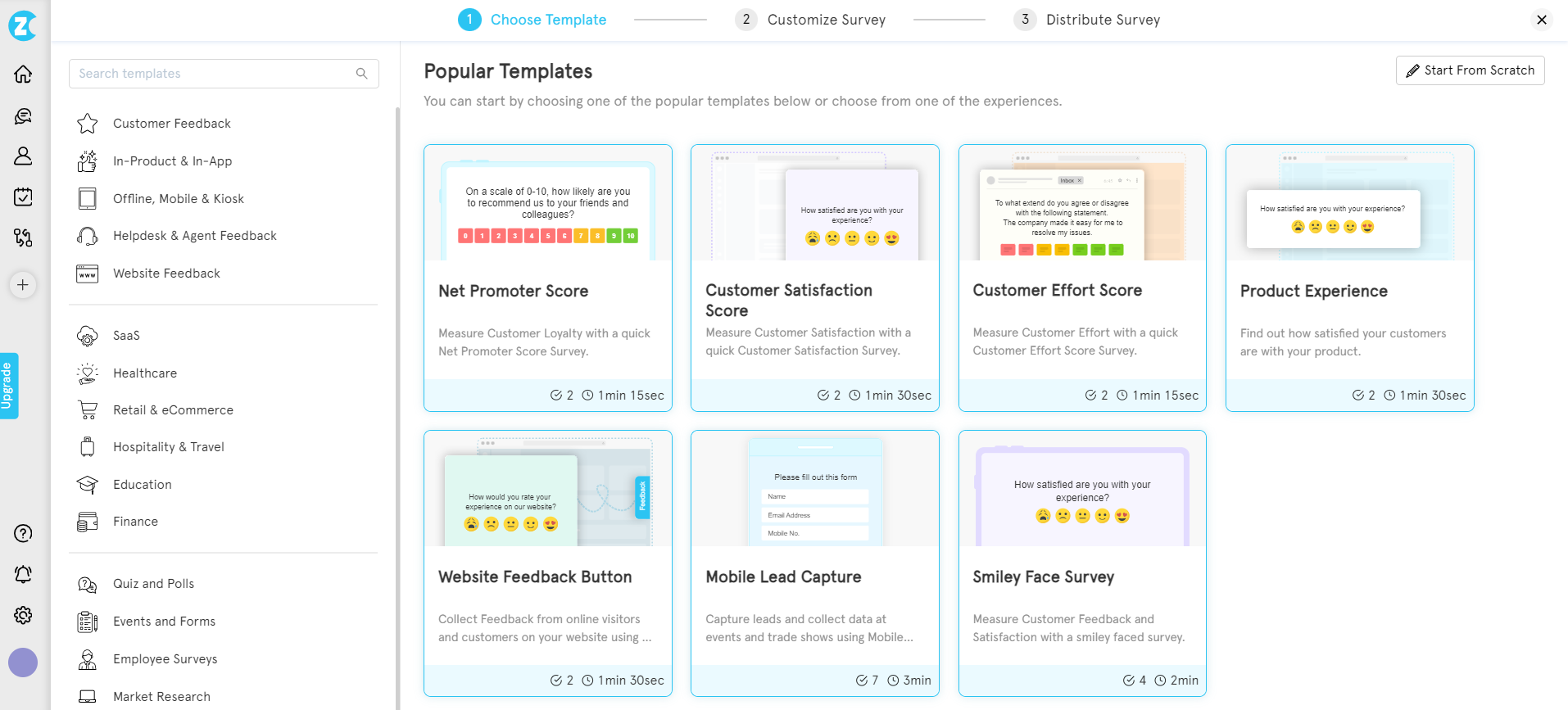
Step 3: Select the Distribution Option
A preview of the selected online survey template will appear. Click on the survey collection channel on the left-hand side based on how you want to share the survey data form (offline, website & in-product, email, SMS, in-app mobile SDK, Link & QR code).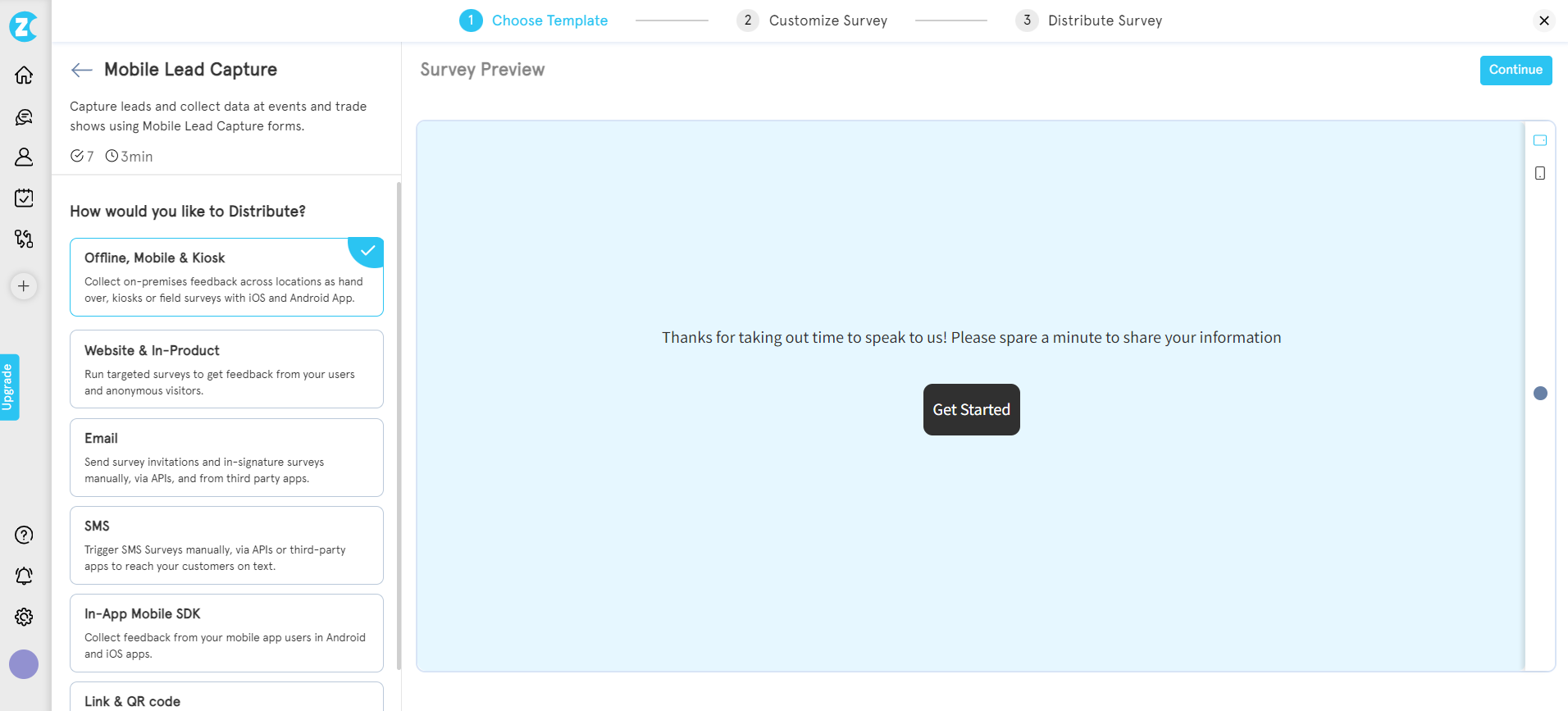
Step 4: Customize your Data Collection Survey
Edit the online survey and explore other functionalities like survey logic, questionnaire design, variables, etc. You can also add a question, reposition it, choose rating and scales, and contact information to your survey here.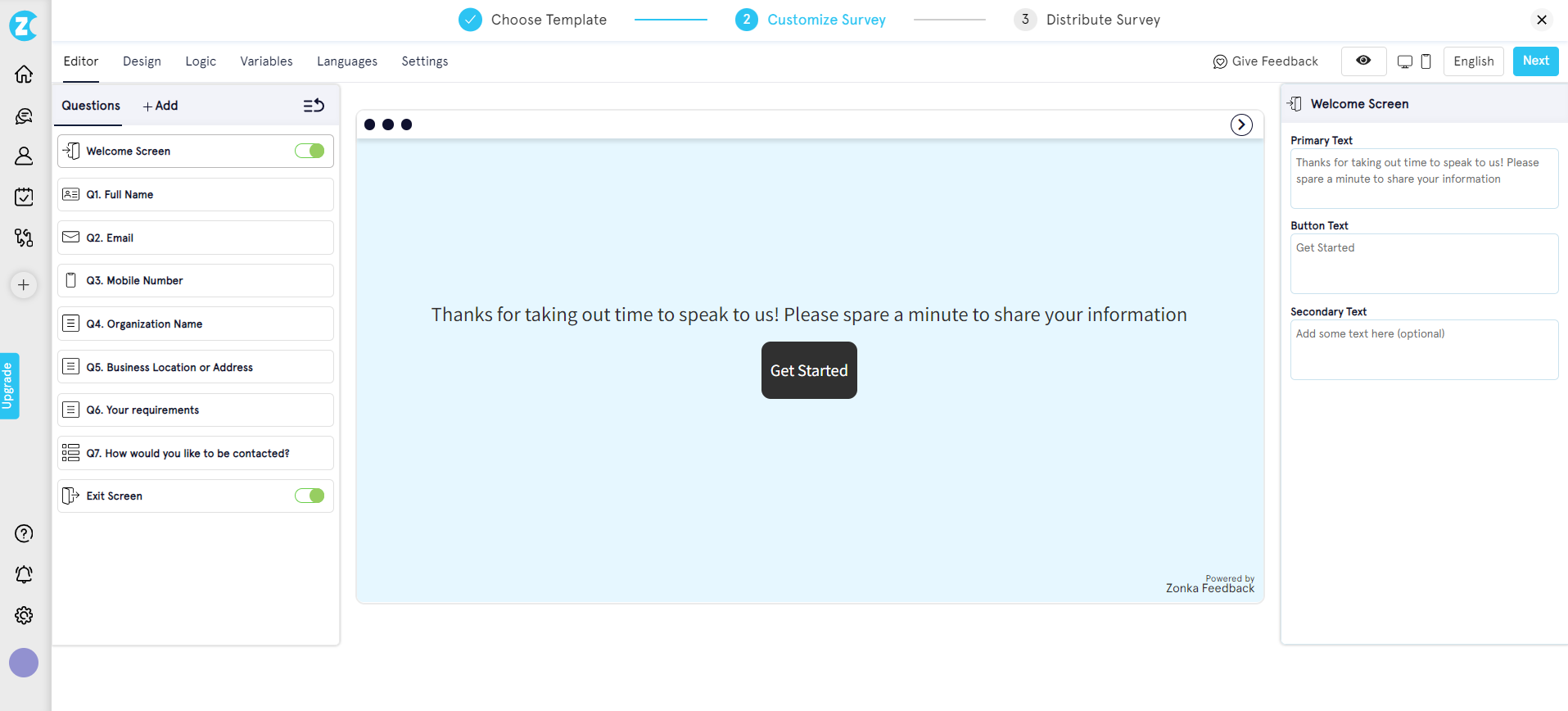
Step 5: Optimize Distribution Channel Selection
Regardless of your selected data collection method—be it offline, email, website, or SMS—ensure contact details such as emails or mobile numbers for offline interactions, recipient details for email and SMS, implement website feedback widgets for websites or in-product usage, configure in-app SDKs, or share links and QR codes as needed.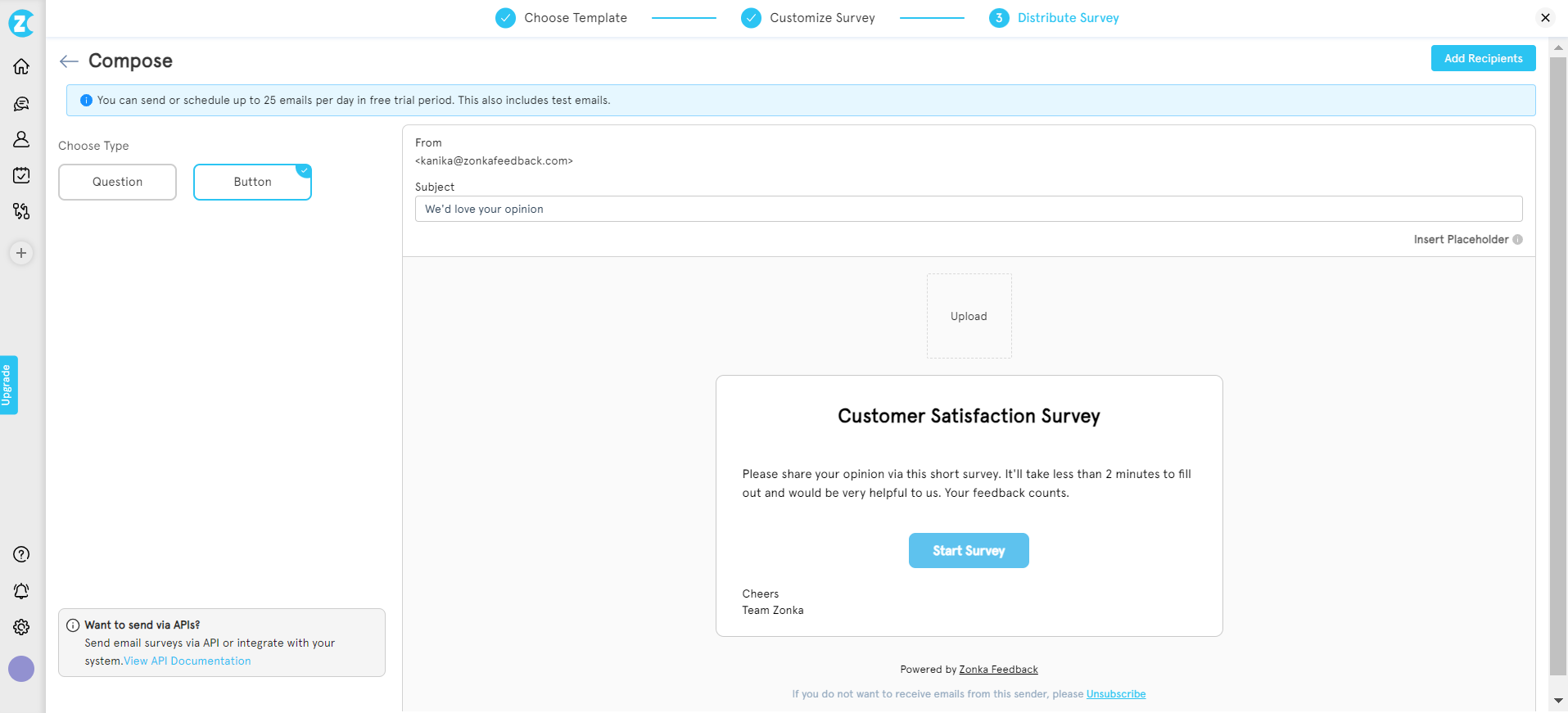
You can further refine your data survey outreach by leveraging user segmentation to target specific groups for responses. For instance, if you aim to present your customer satisfaction survey questionnaire exclusively to those who haven't participated in the survey within the past month, navigate to 'Contacts and Segments' on the left-hand panel, choose 'Segments,' and create a new segment by specifying the necessary details and conditions.
Return to your survey setup page, select the newly created segment from the list, and you're all set to collect your targeted data.
Conclusion
Effective survey data collection is the cornerstone of informed decision-making, offering insights that steer your businesses toward growth and innovation. Whether it's opting for online questionnaires to engage a tech-savvy demographic or utilizing face-to-face interviews for nuanced responses, the data collection research methods should align with the research goals and the audience you want to target for valid data processing.
By using advanced survey software like Zonka Feedback, you can amplify the efficiency of data collection, offering streamlined processes and customized survey creation. You can share data collection surveys through various channels seamlessly and analyze real-time research results in no time.
You can schedule a demo to explore more about the tool.
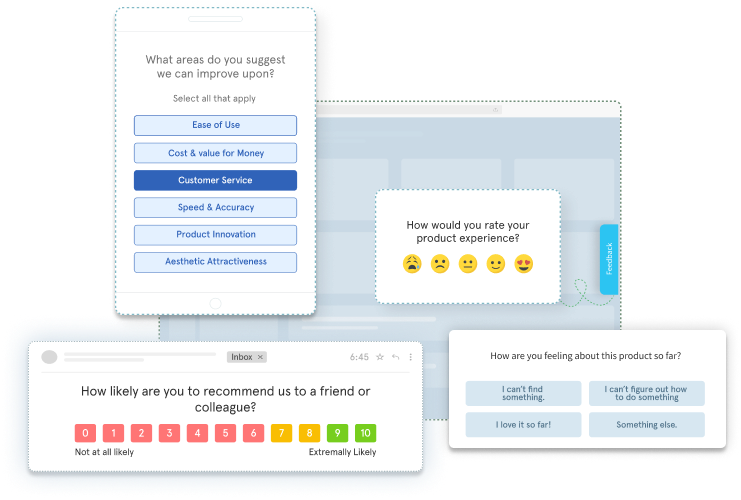




.jpg)




.png)

.jpg)